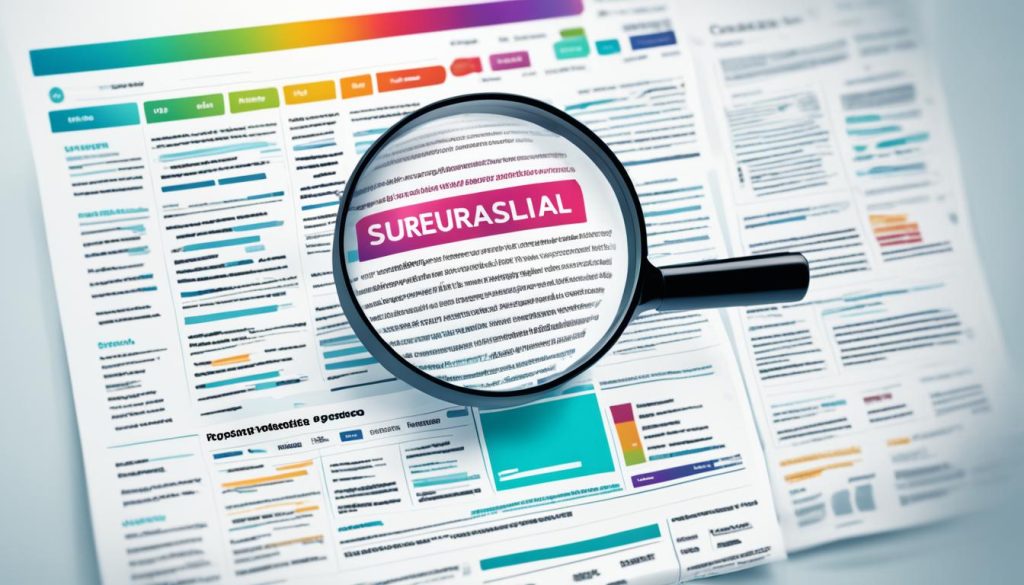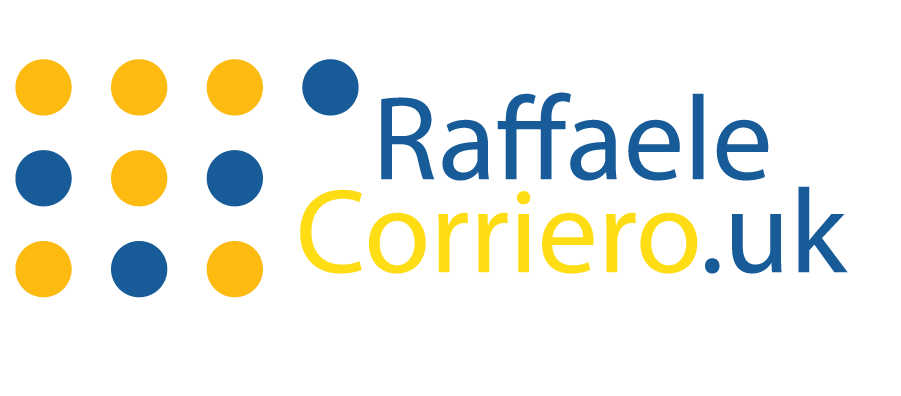Did you know that 75% of people don’t look past the first page of search results? This shows how key it is for websites to use strong SEO strategies to boost their traffic and rank better. SEO is all about making your site more likely to show up on search engines like Bing and Google. It means making a website that can perform well on shared, VPS, or dedicated hosting. This will help it appear when someone searches a specific term.
SEO includes many steps, from how your site looks to creating content that draws people in. This not only attracts visitors but also search engine bots that crawl your site. By doing this, your site becomes more seen, which might lead to more money made.
Key Takeaways
- SEO strategies are crucial for driving website traffic enhancement.
- Ranking improvement can lead to increased visibility and potential revenue.
- SEO encompasses both human visitor engagement and search engine crawler optimisation.
- Optimised sites may require suitable hosting options such as shared, VPS, or dedicated servers.
- Essential SEO processes cover a range of elements from site design to content creation.
Build a Well-Designed Website
Creating a well-designed website is essential. It grabs your audience’s attention. Good design is more than looks; it’s about easy navigation too. Let’s dive into what makes a website engaging and effective.
Importance of User Experience
A good website makes users happy. It’s easy to use, quick to load, and simple to find stuff. Happy visitors are likely to stay longer, engage more, and come back.
Creating an Effective Sitemap
A good sitemap helps search engines find your pages quickly. It’s especially important for big, multimedia-heavy sites. Sitemaps aid in SEO and help users find content, making your site more likely to show up in searches and Google News.
Using Professional Website Builders
Professional website builders make creation easier. Tools from Wix and Squarespace let you build attractive, functional sites with no coding needed. Their easy drag-and-drop and templates make your website welcoming and easy to use, enhancing the overall user experience.
Focus on a Specific Topic

Zooming in on a niche makes you an expert, which search engines love. They direct users to sites known for specific topics. This focus boosts your site’s relevance on that topic. It also makes your topic authority crystal clear.
Benefits of a Niche Website
A niche site shines by giving in-depth info on a certain subject. This draws in loyal readers and builds trust. Plus, it’s easier to rank high on search engines in a niche market. This leads to better visibility and more interaction on your site.
How to Identify Your Niche
Finding your niche means mixing what you love with what people want. Use tools like Google Trends to find an appealing subject with lots of searches. Look for a gap where you can offer fresh ideas or solutions. This keeps your site interesting and authoritative in your niche, making your digital footprint stronger.
Pick Relevant Keywords
It’s vital to find the right keywords to make sure your content reaches the right people. Doing deep keyword research helps you spot SEO-friendly terms. These can make your site more visible and effective.
Using Google Keyword Planner
Google Keyword Planner is a must-have for keyword searching. It finds relevant keywords that match what people are looking for. By checking the search volume and competition, you can pick the best terms for your website.
This tool points you to powerful keywords. It helps plan your content with SEO-friendly words.
Incorporating Long-Tail Keywords
Long-tail keywords are usually three words or more and very specific. They may not be searched a lot but are perfect for bringing in the right visitors. Adding these to your content sets you apart and meet searches more exactly.
Using these specific phrases in URLs and meta descriptions boosts your SEO. This makes your site clearer and more attractive to search engines.
Create Quality Content on a Consistent Basis
Success in SEO relies on making top-notch content often. Regular posts keep your audience coming back and show search engines your site is up-to-date. Top-quality content is key to getting more organic traffic and being seen as a leader in your field.
The Role of Content Quality in SEO
Well-researched, informative content boosts your SEO and brings more visitors. Search engines prefer sites that offer useful info and answer questions. This helps your site climb higher in search results. It also attracts links from top sites and gets people talking on social media.
Strategies for Consistent Content Creation
To keep posting regularly, plan your topics and deadlines with a content calendar. Work with talented writers to promise a steady stream of great content. Try using different types of content, like blogs, videos, and infographics, to keep things exciting. This strategy shows your site is lively and serious about content quality.
Optimise Your Images
Images are key in making websites engaging and good looking. Making sure they load quickly is vital for keeping visitors happy. This also helps your website rank better in searches.
Proper Image Sizing
Start by picking the right size for your images. Big images can make your website slow. This can make people leave. To keep your site fast, resize images but keep their quality. Using formats like JPG or WEBP helps reduce size without losing quality.
Using Alt Attributes Effectively
Alt attributes are crucial not just for people who can’t see images but also for SEO. They let search engines know what your images show. Good alt texts are short, clear, and use relevant keywords.
Using these tips will make your website faster and nicer to use. It will look great and be more accessible to everyone.
Reduce Your Website’s Load Time

Making your website faster is key to keeping everyone happy. If a website takes ages to load, people will leave. It’s important to make your site as fast as possible.
Analysing Site Speed with Google Tools
Google PageSpeed Insights is super useful for checking how fast your site is. It tells you what needs fixing to speed things up. By following its advice, you can make your site much faster.
Optimising Images and Scripts
Making images and scripts lighter is crucial. You can compress images but keep their good looks. Also, make sure your scripts are clean and run at the right time. This makes your site faster and nicer to use.
Utilising WordPress Plugins Like WP-Rocket
WordPress users have a cool tool called WP-Rocket. It helps by storing your pages to load them faster next time. Using WP-Rocket makes your website speed much better, which everyone will love.
Create Attractive Page Titles and Headlines
Crafting page titles and headlines is key to attracting traffic. They must appeal to both search engines and readers. It’s important to have a strategy that meets SEO goals and grabs your audience’s interest.
Difference Between Page Titles and Headlines
Page titles aim at search engines, using SEO-friendly terms to boost visibility. Headlines, though, aim to grab the reader’s attention. They make people want to read your content. Knowing this helps improve your click-through rates.
Optimising Titles for SEO and Engagement
To optimise titles for SEO, include SEO-friendly titles that match search queries and contain key keywords. Creating engaging headlines means writing texts that are impactful and persuasive. This combo of optimised titles and compelling headlines boosts click-through rates and SEO.
- Make sure your page titles include key SEO terms related to your content.
- Write headlines that are both compelling and engaging to draw readers in.
- Find a balance in using keywords to keep the narrative inviting yet optimised.
Write Information-Packed Meta Descriptions

Meta descriptions are short texts below titles in search results. They are like mini-stories for web pages. By carefully writing these 150-character summaries, you can make more people click on your site. These tiny texts are key in grabbing attention without stuffing too many keywords.
Make your meta descriptions clear and full of info to draw people in. By writing inviting summaries, your site becomes more visible and engaging. They play a big role in SEO, giving a sneak peek and encouraging more visits.
Using these snippets can lead to more clicks and better site performance. Remember, a good meta description sets the right scene for your content. It’s about more than just traffic; it’s about making promises you can keep.
Understand and Match Search Intent
Matching your content with what users are searching for is key to ranking higher in search engines. By understanding different search intents, you can make your content more relevant. This makes sure your website meets what users are looking for.
Types of Search Intent
Search intents can be split into four main types:
- Informational intent: Users want information to help answer questions or solve problems.
- Navigational intent: Users are trying to find a specific website or page.
- Commercial intent: Users are looking around before they decide to buy something.
- Transactional intent: Users are ready to buy or do something specific.
When you tailor your content to these intents, you make users happier and your site more relevant.
Reverse Engineering Top Search Results
To make your content more relevant, study the top search results for key words. This process is known as reverse engineering SEO. Tools like Rank Tracker help with this, showing you which keywords and content strategies work best.
By using these insights, you can make your content align better with what users are searching for. This can help improve your site’s ranking.
Use Short, Descriptive URLs

Making short, descriptive URLs is key for good SEO. They should be easy to remember and full of keywords. This makes them easier to share and more visible.
Importance of URL Structure
A smart URL structure helps both users and search engines. Descriptive URLs make it easier to guess the content before clicking. They should be consistent to keep backlinks and shares stable.
Examples of SEO-Friendly URLs
Include your main keyword in your URLs and keep them short. For example:
example.com/plumbing-tipsexample.com/best-coffee-shopsexample.com/seo-guide-2023
URLs like these are short, clear, and use keywords well. This improves SEO and the user experience. Using this method will help your site rank better and get more visitors.
Build High-Quality Backlinks
High-quality backlinks are key to boosting your SEO rank and making your site seem credible. To make the most of this, you need to use smart methods to get good sources to link to your stuff.
Methods for Acquiring Backlinks
There are several ways to get valuable links:
- Guest Posting: Writing for big blogs in your area can help a lot with getting strong links.
- Influencer Outreach: Working with influencers can get you links and attention from their followers.
- Share-Worthy Infographics: Making infographics that look good and share info can make people want to link to you.
Importance of Backlinks for SEO
The quality of your backlinks is crucial for your SEO success. Search engines see these links as proof that your content is valuable. If your site has lots of good backlinks, it’s likely to rank higher. This shows trust and quality. So, good backlink strategies can make your site more trusted and boost your SEO efforts.
Use Internal and External Links Wisely
Links are key for a better user experience and SEO. Using links well boosts site use and makes content more trusted. This helps both users and search engines.
Benefits of Internal Linking
Internal links shape your site’s layout, aiding users and search engines. By placing these links wisely, you spread authority across your site. This raises your content’s rank and visibility. It also leads visitors to more content smoothly.
- Improves site navigation and user experience
- Distributes page authority wisely
- Facilitates search engine crawling and indexing
Best Practices for External Links
External links from trusted sources can make your content stronger. Make sure these links add value and clarity for the reader. Descriptive anchor text for these links makes your content easier to follow.
- Link to reputable, authoritative sources
- Use descriptive anchor text for clarity
- Balance the number of internal and external links
A good mix of internal and external links enhances your site. This approach builds a structured, authoritative website. It’s great for SEO and pleasing users.
Improve Your Core Web Vitals
Making your Core Web Vitals better is key for great web performance. These important user experience points, highlighted by Google, greatly affect your search rankings. We’ll look into Core Web Vitals and how to improve your site’s user experience.
Key Metrics of Core Web Vitals
The Core Web Vitals have three main metrics:
- Largest Contentful Paint (LCP): It measures how fast a page loads. LCP should happen within 2.5 seconds of loading the page.
- First Input Delay (FID): This tracks how interactive a page is. A good user experience means having an FID below 100 milliseconds.
- Cumulative Layout Shift (CLS): It’s about how stable a page is visually. Aim for a CLS below 0.1 for good stability.
Steps to Enhance User Experience
To make user experience better, follow these steps:
- Optimise Loading Speed: Cut down on JavaScript, use browser caching, and a CDN for faster content delivery.
- Improve Interactivity: Reduce the time JavaScript takes to run and use the latest web performance strategies.
- Ensure Visual Stability: Size your images and videos correctly, and avoid ads that change size suddenly.
By working on these areas, your website will offer a smoother, more fun experience. This is crucial for keeping visitors and getting higher in search results.
10 Easy But Powerful SEO Tips
Search engine optimisation is key for any website looking to boost its online presence. By adopting some straightforward yet powerful SEO tactics, you can climb the search engine ranks. This will bring more visitors your way. Here’s a rundown of ten impactful tips to kick things off.
Start by refining your keywords. This means you need to research deeply to find what your audience searches for. Using tools like Google Keyword Planner can be super helpful. Being accurate with keyword placement in content and URLs is vital for SEO success.
Next, focus on crafting quality content regularly. Top-notch articles that solve users’ problems can really engage your readers. They also boost your site’s position in search results. Posting fresh content often attracts more visits from search engine crawlers, increasing your site’s visibility.
Another key step is to optimise your images. Choose the right size and format, like JPG or WEBP, for quicker loading. Adding descriptive Alt attributes improves site speed and accessibility. Both are essential for a great user experience and better rankings.
Don’t forget to speed up your website, too. Use tools like Google PageSpeed Insights for tips on enhancing site performance. Reducing script complexity and applying caching solutions can make your site faster. A quicker load time stops visitors from leaving out of frustration.
By putting these SEO strategies into action, you won’t just rank better in searches. You’ll also provide a top-notch experience for visitors. This builds your online community and leads to success on the web.







